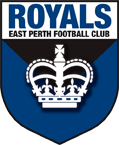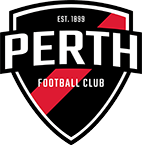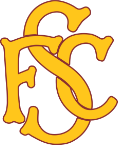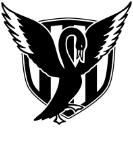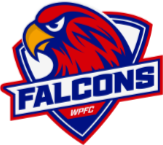

| Round | Competition | Opposition | K | H | D | M | T | HO | FF | FA | G | B |
|---|
| 2011 | Hall of Fame Inductee |
| 1951 | Fairest & Best (Swan Districts) |
| 1948 | Fairest & Best (Swan Districts) |
| 1946 | Fairest & Best (Swan Districts) |
Player 1945-1956
Games 216 (Swan Districts 210, Western Australia 6). First SD player to 200 league games
Goals 32 (Swan Districts 32 WA 0)
Honours: Swan Districts Fairest and Best (Swan Medal) 3 times - 1946, 1948,1951 Swan Districts Captain 1951-1952 Swan Districts Team of the Century 1934-2000 SDFC Life Member (1955)
Vice President Swan Districts Football Club 1959-1966 SDFC Committeeman 10 years
FEW stories of football courage and tenacity can match that of Duggan Anderson, the first Swan Districts player to surpass 200 League games for his club, 160 being played with only a thumb on his left hand after a sawmill accident left him with a handicap that most thought would end his career. Not only did the brilliant centre half back not miss a game as a result of the accident, but he went on to play state football on multiple occasions with a modified playing style necessary to accommodate the handicap.
Duggan Anderson grew up in Midland and missed qualifying for the underage competition in 1942 by only nine days, the age limit requiring players to turn 18 no earlier than October 1, 1942. He was forced to play for the Midland Junction Police Boys and in an “overage” competition in 1944 until open football resumed in 1945. Anderson immediately took the centre half-back position in a strong Swan Districts team bolstered by pre-War stars Spec Sinclair, Jack Murray, Clem Rosewarne and Harold Andrews. Anderson was tall and strongly-built with an excellent high mark and a long driving kick with either foot. He was an intelligent player who read the play superbly and was ideally suited to the key defensive role. In his first two seasons he was often described in match reports as performing brilliantly with fingertip defensive marking a feature. He was selected on the half-back line in the first two post-War state games against South Australia in 1946 which were played in front of vast crowds due to the seven year absence of interstate football.
After winning his club fairest and best award and playing state football in 1946, Anderson looked set for a superb career before tragedy struck at the family saw mill in Gidgegannup in late January 1947. A circular saw took all four fingers off his left hand at the palm and only Anderson and his surgeon Dr Ben Buttsworth, gave him a chance of returning to football. Attending training with a special bandage at the start of the 1947 season simply to keep fit, Anderson was encouraged by Buttsworth, who was also the club doctor, to discard the bandage and join in the handling drills. Although his ball handling style had to be modified somewhat, he experienced no pain and took the field in the league side in Round one and for all but two games that season. Although he could still mark well he found it more effective to spoil the ball and gather it in at ground level and with this method he regained his key defensive position in state teams in 1950 and 1952. He won two more club fairest and best awards and on July 7, 1956 achieved the special goal of becoming Swans’ first 200 game player. Anderson retired at the end of that season unfortunately having experienced finals football only in his first year. He did, however, experience grand final glory in 1957 in the Sunday League with Scarborough, who were coached by former Swan Bob Annesley. The best-afield trophy in the decider came as an added bonus.
Keen to further contribute to his club, Anderson joined the Swan Districts Committee of Management in 1957 and served as club Vice President from 1959 to 1966. He had an important role in the signing of Hadyn Bunton jnr as senior coach in late 1960 and enjoyed the period of success that followed.
Four years after leaving the SDFC Committee, Anderson enjoyed seeing son Peter progress to league level at Swans and has maintained a keen interest in club fortunes. His own long service was rewarded with Life Membership in 1955 and selection in the Swans Team of the Century in 2000. His Induction into the WA Football Hall of Fame reminds what can be achieved after a setback with courage and perseverance and should serve as an inspiration to all.
| Season | Competition | Club | Matches | K | H | D | AVG | M | T | HO | FF | FA | G | B |
|---|
| Competition | Matches | K | H | D | AVG | M | T | HO | FF | FA | G | B |
|---|



